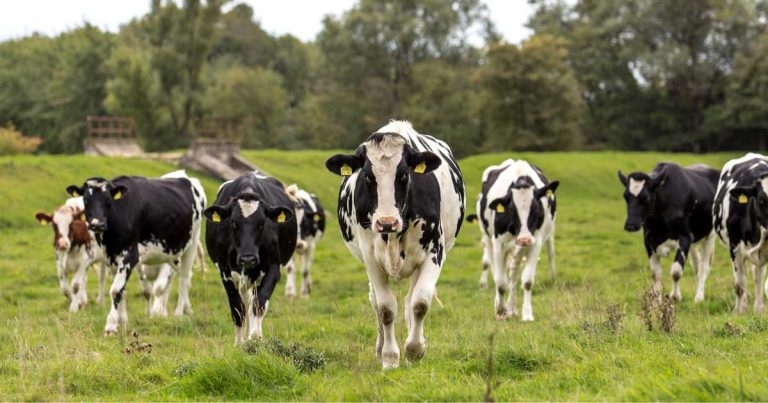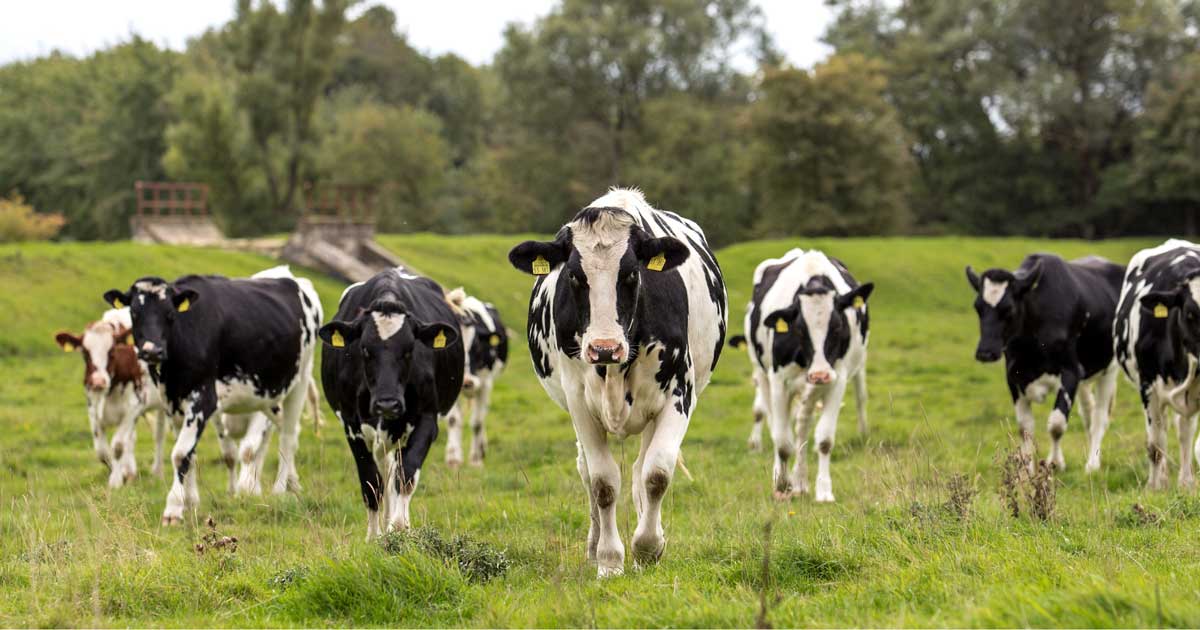11 Oct 2022
BVD: are vets failing clients?
Phil Elkins considers what veterinary surgeons – and farmers – have to do to eradicate this common disease in cattle.

Image: © Viktor Kunz / Adobe Stock
Bovine viral diarrhoea (BVD) is one of the most common viral diseases affecting cattle globally and in the UK.
Success has been found in a range of countries in significantly reducing the prevalence of disease through national and regional eradication programmes, yet the disease remains a significant challenge to animal health within areas of the UK.
For example, in Scotland, where the mandatory control scheme has been in action for nine years, the percentage of herds achieving negative status is around 90%1.
A total of 24% of respondents to the latest BVD survey of farmers said that BVD had made no impact on their herd, indicating that a lot needs to be done before we can achieve eradication of this disease2. So, have we as a veterinary profession failed the farming industry with regards to BVD eradication?

Is eradication the end goal?
The author has spent too much time during his career discussing a certain disease where the aim is official freedom from it rather than eradication, as the hurdles to achieving eradication are deemed too large to warrant the benefit over controlling its impacts.
If you haven’t guessed, the disease in question is bTB. BVD presents a far different challenge and one where the desired outcome absolutely should be eradication. This is for a number of reasons, as listed below:
- Achievability: examples from elsewhere show that, with good control strategies in place, success in eradicating disease from herd, regions and, eventually, countries is achievable. Take the example of Sweden; in 1997, the herd level prevalence of BVD was 16%, with a 47% herd seroprevalence. By 2004, this had been reduced to negligible levels through a voluntary scheme without the use of vaccines (author’s emphasis).
- Knowledge: a wealth of information is readily available pertaining to BVD and its control, with plentiful ongoing research. A Google Scholar search on the topic reveals more than 3,000 published papers this year alone.
- Simplicity: while BVD has been isolated from small ruminants and deer, it is, essentially, a single-species disease with simple epidemiology.
- Tools: as clinicians, a wide range of tools is available to further the conversation with clients around BVD.
A clever adversary or opportunities for control?
BVD is caused by the bovine viral diarrhoea virus (BVDv), a pestivirus related to the pathogens that cause classical swine fever and border disease. The main source of infective particles is through direct or vertical transmission, which gives us a great edge in controlling the disease.
Environmental survival of BVDv is related to temperature and humidity, with a maximum survival in slurry at 5°C of three weeks, or three days at 20°C3. Anecdotal and experimental evidence of transmission exists from a variety of non-bovine sources, including rectal examination gloves, needles, nose gags and ambient air4, stable and horseflies, and a number of other ruminants and camelids. These transmission routes may play an important role in transmitting BVD between herds, but as most of these routes will not cover long distances within the timescale of survival, their importance is far greater at a local level and also far more controllable.
Maintenance within a herd
As mentioned previously, the majority of transmission within a herd is through direct or vertical spread. Direct transmission within social groups often leads to rapid spread, with a protective seroconversion in response.
It was believed in many cases that an outbreak of BVD was as protective as vaccination, and this tactic was promoted by some clinicians to induce immunity before the risk of vertical transmission. Obviously, this carried the risk of losses through disease and incomplete seroconversion of the group leaving naive animals, and this is not an approach the author has experienced in the UK for 20 years.
It is vertical transmission that is the primary culprit for maintenance within a herd, through the creation of persistently infected (PI) fetuses that, once born, become a permanent source for infection within the herd. Shockingly, nearly 8% of farmer respondents to the aforementioned survey stated they would either try to rear a PI for slaughter, sell it or retain it.
So, given the wealth of information available, education through subsidised (or even free) advice and eradication schemes, the vet profession has failed to convince 8% of farmers of the inherent risk associated with PI retention.
Transmission between herds
Three main routes exist for transmission into a herd:
- Purchase of a transiently infected animal: while a risk of this always exists as these animals may not be identified by pre-purchase screening, buying from herds with appropriate BVD control plans in place, together with isolation on arrival, can reduce this risk to a negligible level.
- Purchase of a PI animal: this should be entirely preventable given the range of testing modalities available. The issue in the author’s experience is that, despite advice to the contrary, pre-purchase sampling is still not considered an absolute necessity. The caveat to this is the “Trojan horse” – a purchased pregnant animal carrying a PI fetus. Again, the risk from this can be managed through early-life testing.
- Local spread: through the aforementioned transmission methods, or even cattle-to-cattle spread through escapees or over-the-hedge transmission, BVD can enter herds without the movement of animals. The author once experienced this in a herd surrounded by the sea on three sides and a village on the fourth. The spread could have come from a feed lorry, an AI technician or even a vet. Again, these risks are reducible through good biosecurity (and we need to be whiter than white here as a profession) to a manageable level.
Given that it is not fully possible to mitigate for all risks – a horsefly, for example, could spread between neighbouring farms – a discussion around the protective role of a vaccine should be had with all naive herds.
Controlling the disease
Like many diseases, BVD is eradicated from a herd through removing the maintenance route and preventing new incursions. With regards to BVD, in many cases, that is a fairly simple prospect:
- identify and remove PI animals
- control transient disease – especially in breeding animals
- consider purchasing policy
- improve biosecurity
Consider that vaccines also have a role to play in all four of these factors – preventing the creation of new PI animals, controlling transient disease, protecting against transient infection in purchased animals, and reducing the impact of any biosecurity weaknesses.
If it is that simple, why have we not eradicated BVD?
This is the challenge. Some clear reasons exist why we have not seen the success that other countries have achieved in this regard.
Taking the earlier example of Sweden, the country has 1.5 million cattle with a density of 2.7 per km2, compared with 9.36 million in the UK at a density of 38 per km2. This much lower density reduces the risk of local biosecurity lapses.
Equally, an appetite existed from the main routes for cattle trading to identify those herds clear from BVD for premium value based on certification from the control scheme. That appetite has been sadly lacking from the auction marts in the UK, despite nearly 90% of farmers wanting BVD status of individuals and herds displayed at point of sale.
The farmer uptake of the voluntary scheme in Sweden is another differentiating factor, with 100% of dairy farmers and 99% of beef farmers enrolling, despite carrying the entire financial burden. These are figures we could only dream of.
Are we failing? If so, why?
The simple answer is no, we are not failing. As much as it may seem a simple route to eradication exists that is not being followed to its conclusion, many other players are involved in executing the route.
The most obvious of these is the farmers themselves. We can attempt to educate, motivate change and facilitate in this regard, but uptake is never going to be 100%. The farmers need to want to eradicate BVD to take advantage of the advice we can give them.
To assist with that, other areas of the industry need to cooperate: the auction marts, for example, could make it far easier to identify cattle that carry minimal risk of BVD spread. This is increasingly happening for sales by private treaty or dispersal sales, but very rarely for individual animals paraded around the ring.
While the BVD schemes are either voluntary or do not legislate the removal of PIs, eradication will seem like a light at the end of a very long tunnel.
While the majority of the farming industry will take our advice on board and take appropriate action, for those that don’t, legislation and compulsory action will be needed. It is very much a case of carrot for the masses, stick for the few.
So, in summary, the profession is aware of what to do to eradicate BVD, and what we need is to keep circulating the right messages to promote the right actions and bring the other stakeholders with us.
Around 10 years ago, when discussing an outbreak on a client’s farm, the following statement was discussed; it has since been repeated multiple times as it has been borne out in future production. The original source is unknown, but the author will attribute it to the client: “Once you eradicate BVD from your herd, your perceptions of normal change”. We can help change those perceptions.
